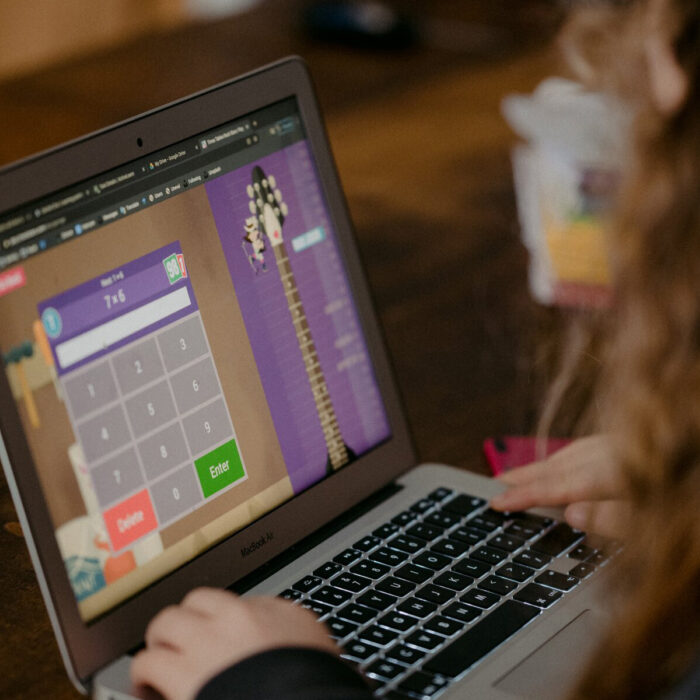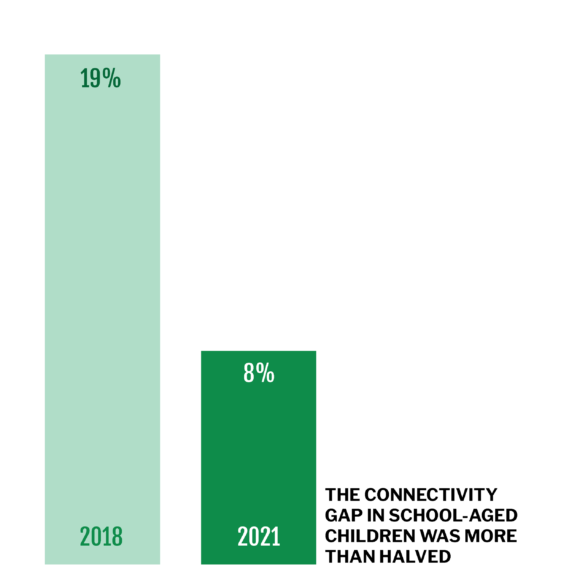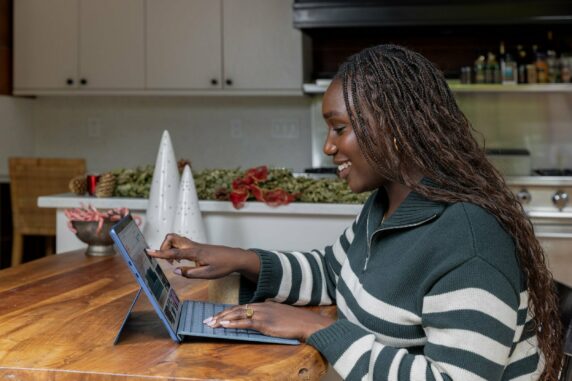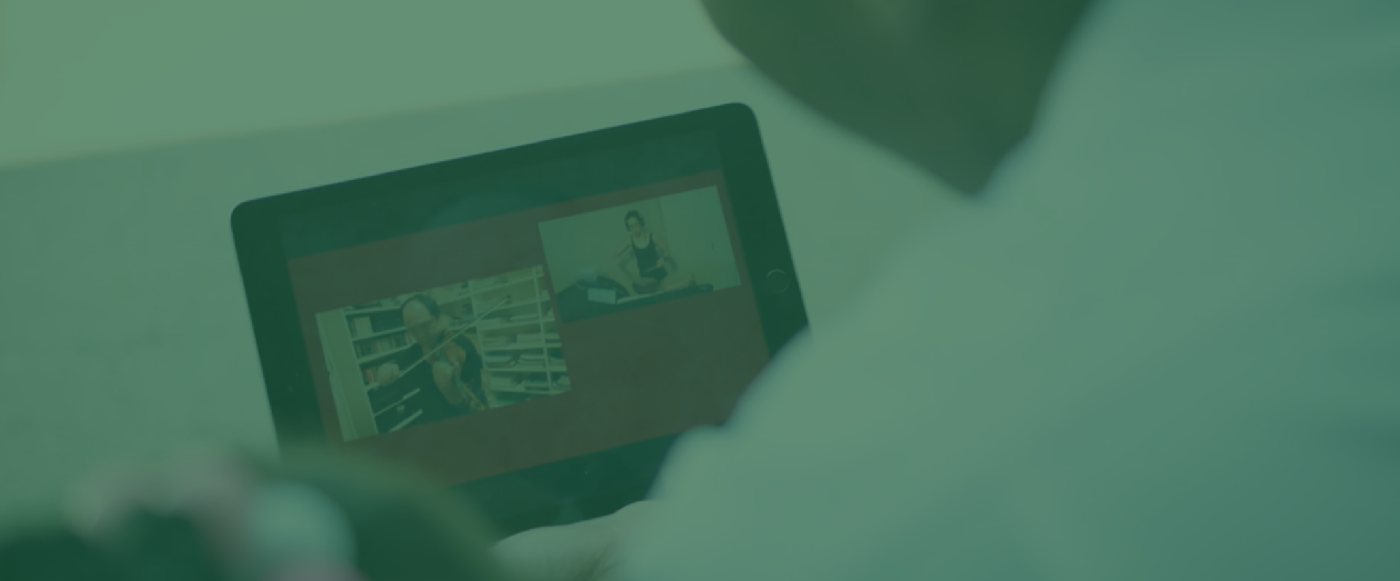
Chicago can continue to not just bridge the digital divide but defeat it.
Fall 2022-Spring 2023
Dear Friends and Partners:
Two and a half years ago, our lives were upended by a once-in-a-century pandemic. For some of us, COVID-19 has been a significant inconvenience but, for more than 1.1 million Chicago households, it was a catastrophic disruption to daily life.
In the face of this enormous global disruption, Chicago partners quickly came together to devise a solution.
Chicago Connected proves that we can solve big problems—when we partner and listen to those most impacted.
Chicago Connected is working and it’s working at scale. But we can still do more. By focusing on three core areas, Chicago can continue to not just bridge the digital divide but defeat it.
In the Fall of 2022, we released Defeating the Digital Divide, which includes K1C’s analysis of Census data through the 2020 calendar year.
In the Spring of 2023, K1C utilized newly available 2021 American Community Survey (ACS) data, giving us a deeper understanding of Chicago Connected’s impact on Chicago’s digital divide. New findings can be accessed in our Supplement to Defeating the Digital Divide.
We invite you to review our progress and dream about what’s possible next for our great city. Together, our great city can lead the nation and inspire others to work toward true digital equity and inclusion.
In Partnership,
Hal Woods
Chief of Policy, Kids First Chicago
Dr. José D. Pacas
Chief of Data Science & Research, Kids First Chicago
Key Recommendations
Connectivity gaps can be addressed through a concerted effort to sign up eligible families for the Affordable Connectivity Program (ACP) and by expanding the number of high-speed, low-cost internet offerings available in the city.
Device gaps can be eradicated through a public-private partnership with corporations, government, and local nonprofit organizations to recycle and distribute computers to households in need.
Digital skills gaps can be addressed through expanding and better marketing existing learning opportunities, while workforce needs can be addressed through improved alignment between content providers and employers.

Digital Equity in Education
Kids First Chicago (K1C) and the Metropolitan Planning Council partnered in spring 2020 to call attention to the impact of the digital divide on Chicago families. Our initial report revealed the city's widespread connectivity gaps and proposed several immediate solutions, which inspired the Chicago Connected Program.
Chicago Connected
Launch & Impact

Launched in June 2020, Chicago connected is a groundbreaking, multiyear program to close Chicago's pre-kindergarten-12 (PK-12) digital divide for 100,000 Chicago Public Schools (CPS) Students
This unique partnership among CPS, the City of Chicago, internet service providers (ISPs), philanthropists, and dozens of community-based organizations (CBOs) has connected more than 100,000 students – nearly 1 in 3 CPS students – and provided high-quality digital learning content to thousands of families. Chicago Connected has become the national model for closing the digital divide, spurring similar initiatives across the country.
“Before Chicago Connected, I did not have the Internet. I relied on my phone and my mom’s Internet service [she] lived below me. And then, the pandemic hit. Between working from home and supporting my 8-year-old son with remote learning, quality internet became essential. Thank God for Chicago Connected!”
- Kendra Torres, CPS Parent, Woodlawn
The $50 million program is the most extensive and longest-term effort by any city to date, offering free high-speed broadband internet to eligible households.
This initiative is a best-in-class example of how parents, policymakers, and partners can come together to solve a long-standing problem.
Resources & Partnerships Created by Chicago Connected:
- Launched new Digital Learning Toolkit in July 2021
- Inspired several other district and city programs (national case studies published by EducationSuperHighway and the Federal Communications Commission [FCC]) and catalyzed the FCC’s Affordable Connectivity Program (ACP)
- Established Guiding Team, a cohort of community and parent leaders tasked with advising on the design of digital learning programming
- Forged partnerships with digital learning platforms Coursera and Northstar, providing free, best-in-class resources to help families develop digital skills to support academic, career, and life goals
- Expanded to support graduating CPS students attending City Colleges of Chicago
100,000+
CPS Students in 60,000+ Households Connected to the Internet in the First Two Years of the Program
30,000+
Digital Learning Hours Logged by Chicago Connected Families
20+
CBOs Across the City Conducting Programs Outreach in Schools & Delivering Digital Learning Programs

I remember last year trying to support my Pre-K grandson with his remote learning. At that point, I could not even figure out how to submit assignments to his teacher online! At age 57, I decided I needed to roll up my sleeves and learn how to use this thing called a computer. In this day and age, EVERYTHING is online. Through free Northstar workshops with Hope TEC, I am proud to say I’ve learned the basics and even earned two certificates for my resume. I am now better able to support my grandkids, and will soon start to pursue an online job with my new skills.
—Jacqueline Slaughter, CPS Grandparent of 6, Englewood
The Crucial Need
A Citywide, Comprehensive Digital Equity Plan
Nearly 1 in 4 of all Households do not Own a Laptop or Desktop
In May 2022, nearly two years after the launch of Chicago Connected, Mayor Lightfoot’s administration announced the Digital Equity Council, a cross-sector, community-driven effort to close Chicago’s digital divide. “Born out of Chicago Connected,” the Digital Equity Council seeks to “build upon Chicago Connected’s historic progress in the PK-12 space” to address the barriers to digital equity faced by Chicago residents.
While Chicago Connected has dramatically increased the number of connected households with school-age children and provided those households with high-quality digital learning resources, Census data show that many Chicagoans remain disconnected.
There are three primary elements of digital inclusion:
- Connectivity – Affordable high-speed internet
- Device Ownership – Internet-enabled desktop or laptop
- Training & Support – Digital learning resources and training
Key Points:
The Digital Divide Is a Racial Equity Issue. Despite the historical progress of Chicago Connected, connectivity gaps for Chicago residents remain stubbornly high in communities that are predominately Black and Latinx/a/o.
Device Ownership Has Increased, but It Has Been Driven by the Increased Acquisition of Smartphones. Since 2018, there has been a substantial increase in the number of Chicago households that own an internet-enabled device. However, a closer look reveals that this increase has been driven largely by increased ownership of internet-enabled smartphones. Through our discussions with Chicago Connected families, we know that a smartphone is insufficient for remote work or school. At the same time, the number of households that own a laptop or desktop computer has changed very little since 2018.
Participating in the Global Economy Requires Digital Skills. Possessing digital skills includes both being comfortable using current technology and having the capacity to adapt to new technologies. It also includes being able to participate in job-specific skill development to advance in the workforce, as well as the ability to adapt to advances and changes in the labor market. In short, you may own a computer and you may be connected to the internet, but if you don’t have the necessary skills to navigate these tools and devices, there is a world opportunity closed to you.
Diving Deeper
Recommended Actions to Bring Digital Equity to all Chicagoans

Our recommendations for addressing the three prongs of digital inequity – connectivity, device ownership, and access to training – will require a community-led “all hands on deck” approach.
Each recommendation will require commitment from the public sector – including the city of Chicago, the state of Illinois, and/or the federal government – as well as our city’s private sector and broader civic community. Community anchor institutions – both government institutions like CPS and Chicago Public Library (CPL) – as well as community-based nonprofits, will play a critical role.
Through planning, execution, sustained funding, and an abiding commitment to maintain momentum and realize this historic opportunity, the city of Chicago can become the first large urban city to eradicate the digital divide, unleashing the potential of all residents to thrive regardless of ZIP code.
1. Connect All Chicagoans to Free or Low-cost High-speed Internet. Internet access is now as essential as water and electricity. Access to affordable, reliable, high-speed broadband is necessary to fully participate in modern life. In response to the global COVID-19 pandemic and inspired by the FCC’s case study on Chicago Connected, the United States Congress appropriated $3.2 billion to the FCC in late 2020 to help low-income households pay for broadband service. By late 2021, the EBB Program became the Affordable Connectivity Program (ACP), a new, long-term $14 billion initiative that provides a discount of up to $30 per month toward internet service for eligible households.
2. Close Chicago’s Device Gap. There are already enough devices in Chicago today to ensure every household can own one. Let’s refurbish and distribute them. Chicago has the hardware, technical and operational expertise, and the capacity to fully eliminate the city’s 260,000 device gap over the next three years.
With 10 Fortune 500 companies headquartered in the city and more than 165,000 tech workers, Chicago’s corporate sector has an ample supply of laptops and desktops. Chicago’s public sector, too, possesses hundreds of thousands of laptops and desktops, with more than 200,000 at CPS locations and thousands more owned by the city of Chicago, the City Colleges of Chicago (CCC), CPL, the Chicago Park District, the Chicago Transit Authority, and the Chicago Police Department.
3. Offer Free and Low-cost Digital Learning Resources That Meet Chicagoans’ Needs. For non digital natives, non-English speakers, and other populations, navigating the internet can be a barrier. Let’s remove this obstacle by leveraging existing resources and procuring new tools tailored to addressing every Chicagoan’s unique learning needs.
Chicago has an abundance of free and low-cost digital learning resources. In fall 2020, the Chicago Connected program launched its Guiding Team composed of parents, community organizations, government agencies, and digital learning experts to curate best-in-class digital resources tailored to the needs of Chicago Connected families.
Since then, 2 in 3 Chicago Connected participants have expressed interest in technology training. The Guiding Team implemented a three-pronged approach to serving families’ digital literacy needs: self-paced resources, live trainings from local CBOs, and access to citywide, one-on-one tech support.

